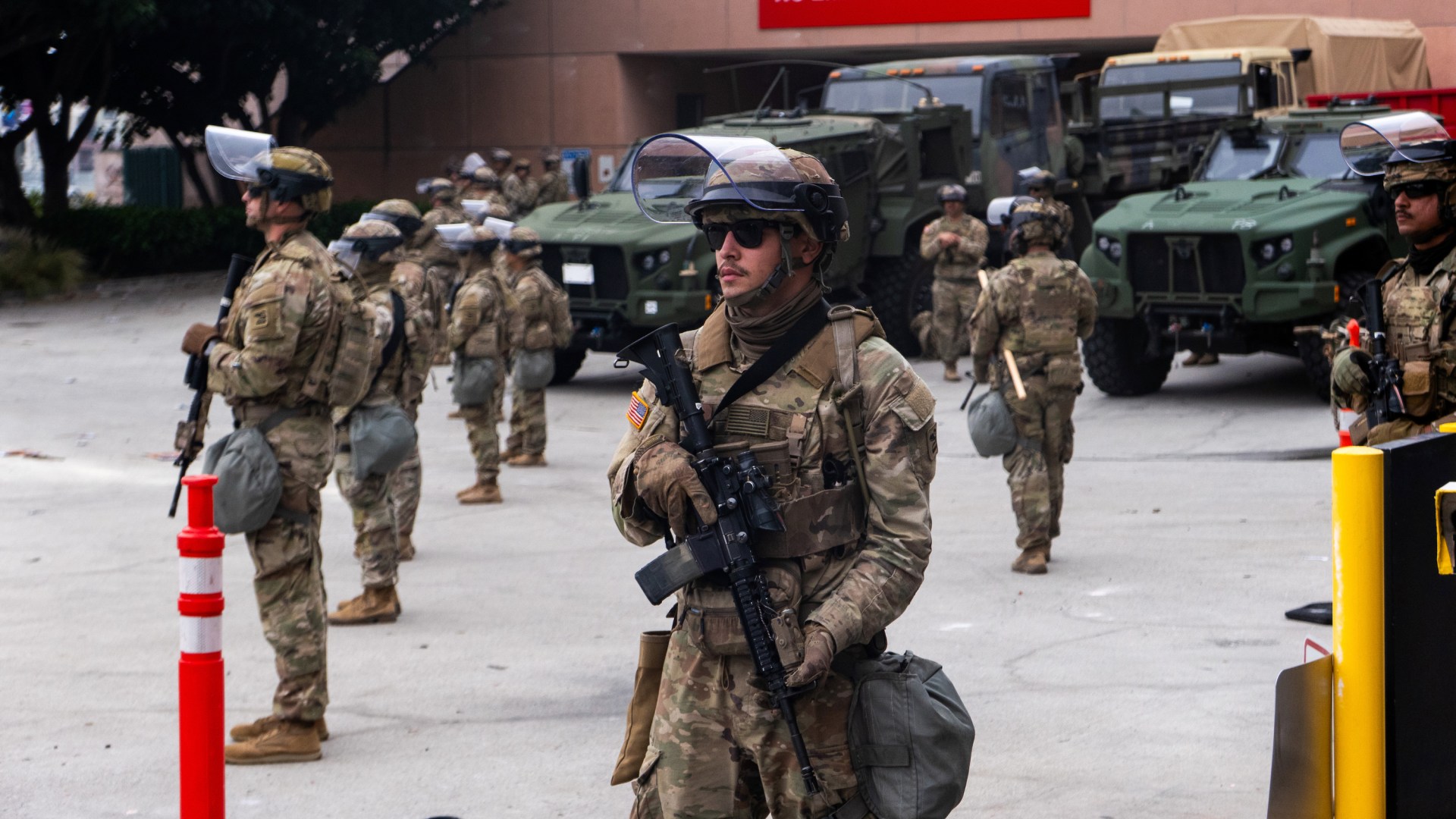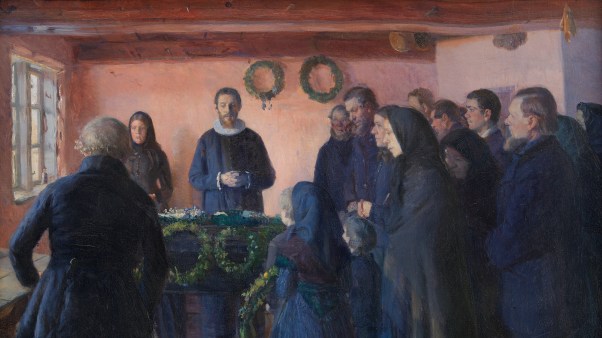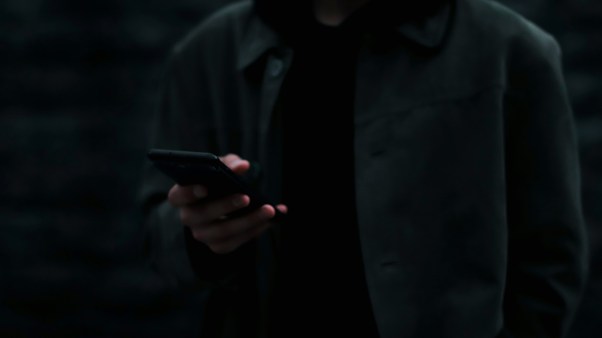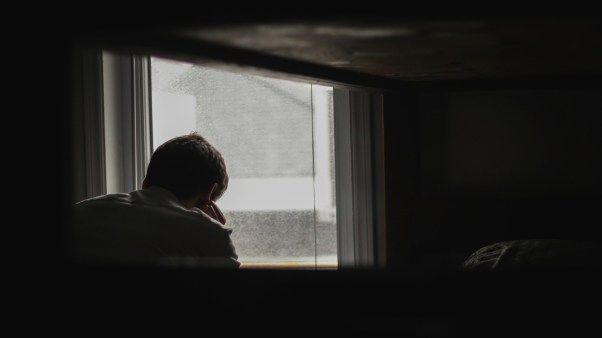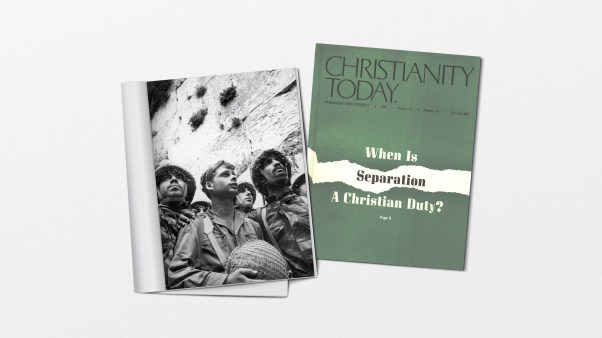For pastors trying to minister to congregants caught in immigration raids, the first hurdle is finding them.
The informal detention centers used by the Trump administration don’t have clear signs or processes, so visitors coming to offer prayer, counsel, or comfort may have to search for the building and then wait in vain for hours.
Take one facility in downtown Los Angeles. Around the side of the federal court complex, a barricaded, sloping driveway goes down into a gated basement loading dock. Walk around the barricade and down the driveway, and an opening appears on the right to a dark concrete hallway, with “B18” painted on the side of the entrance—the marker for the detention center.
On a hot June afternoon, the family members, clergy, and lawyers who actually found the basement facility lined up in the hallway and spilled into the driveway. There were Iranians, Lebanese, Chinese, and Mexicans—all waiting during afternoon visiting hours to see someone caught in LA’s mass immigration raids, which have taken an increasing number of Christian asylum seekers.
Some in line told CT that the person they were visiting had legal authorization to be in the US. They spoke on condition of anonymity due to fear of retribution. As visiting hours ended, a drone appeared, hovering over the loading dock area where people were waiting.
The federal court complex has a formal detention facility, the Metropolitan Detention Center, but the basement facility is simply a room without beds that’s being used to hold detainees, according to visitors there.
One woman stood in line weeping. Her husband had been arrested that day. She clutched a few chocolate candies that she had grabbed for him, and she was berating herself for bringing something so small.
Pastors from an Indonesian church in the area waited in vain for hours to see one of their congregants who had been arrested days before. Very few who stood in line all afternoon got inside; one successful visitor arrived two hours before the official visiting hours began at 1 p.m. and waited five hours in the dark hallway.
Some left only with the information that the detainee they came to see was no longer in the facility’s system. That could mean the person was transferred out of state or had already been deported.
“There are the informal sites now in play because of the high number of arrests happening in Los Angeles,” said Sergio Perez, a civil rights lawyer in Los Angeles who formerly worked for the US Department of Justice’s civil rights division. “The way this federal government is going about immigration enforcement is not akin to anything I have seen.”
Detentions have increased as the White House immigration boss Stephen Miller set a goal of 3,000 arrests per day.
Perez, now the executive director of the Center for Human Rights and Constitutional Law, found out by word of mouth about the basement detention center last week and visited one of the detainees; attorneys have priority to get in, but he still waited hours.
While waiting, Perez spoke with a Pentecostal pastor who came to pray with a congregant arrested by ICE. Like the Indonesian pastors, the pastor he met never got in.
Perez thinks that pastors being unable to meet with their congregants in detention violates the Religious Land Use and Institutionalized Persons Act (RLUIPA)—the federal law protecting religious practice while in custody. Clergy getting access to ICE detainees has been a problem in the past too.
Last week, World Relief published a statement from California evangelical leaders on refugees and immigration, saying in part: “Government must not impose restrictions on churches, individuals, or faith-based organizations that offer spiritual or material support to immigrants—regardless of legal status.”
Churches in the area are now mobilizing visits to one of the main immigration detention facilities, the Adelanto ICE Processing Center, about 60 miles east of Los Angeles.
At a Saturday meeting at Pasadena Covenant Church, pastors encouraged a gym room of about 150 people from area churches to go to the detention centers to visit the detained.
The LA raids are disproportionately affecting Christians because migrants are disproportionately Christian. More than 10 million Christians in the US face the threat of deportation, according to a recent study by the Center for the Study of Global Christianity at Gordon-Conwell Theological Seminary.
Young Hispanic churchgoers described to CT sleeplessness and stress over the raids, which have caught up both legal and undocumented immigrants. They found themselves watching videos of these ICE arrests over and over.
With the constant raids in LA, communities feel “persecuted,” said pastor Marcos Canales at his church, La Fuente Ministries. Some churches have posted signs making clear they are a private space, one effort to deter ICE from entering.
Canales’s congregation includes US citizens who now opt to carry their passports everywhere because of the fear of arrest.
“Jesus said, ‘Come to me, all who are weary,’” Canales told his congregation on Sunday. “God sees the cries, pain, the reality that we live. That is being just. God does not close his eyes to what is happening in front of us. That is the God we will pray to. That is the God who says, ‘I have lived through this.’”
Rosa Cándida Ramírez, another pastor at La Fuente, is a US citizen but carries her passport card now, and got her US-citizen parents to get passports too—but she is full of anxiety. She said people in their congregation saw trucks from the Army Corps of Engineers, present to help with fire recovery, and worried that they were ICE agents.
“It feels very dystopian,” Ramirez said. “As a brown-skinned woman, I’m afraid. It could be me.” Her US-citizen dad, who fled the civil war in El Salvador in the 1980s, has darker skin and a thicker accent, and she has had conversations with him about what to do if he is arrested.
“These are conversations I didn’t think I would have,” she said.
At the detention center, visitors brought sweaters because their family members had been arrested in summer attire and word spread that the detention area was very cold. Several who made it inside said the immigrants were kept in a large, crowded room with no beds.
The detainee whom Perez met with described 70 people cramped in one room, he said.
Another immigration attorney came to visit a Chinese client with an asylum claim and work authorization; he said Chinese asylum claims are usually granted. The detained woman had two young daughters and used her one phone call to ask a neighbor to take care of them. The attorney said that in his years of working at the court complex, he has never seen the holding area so packed.
“People are at most supposed to spend an hour or a couple of hours at this site,” said Perez, but now they were being held for days.
Congress is considering dramatically increasing the budget for immigration detention to accommodate the growing number of arrests. On Tuesday the Senate passed its version of Republican spending bill, which included the surge in funding for immigration detention.
CT asked ICE about the detention conditions and the visitation rights of clergy but did not receive an immediate response. The Department of Homeland Security, which oversees ICE, responded to The New York Times’ description of bad detention conditions by saying that detainees “are provided with proper meals, medical treatment, and have opportunities to communicate with their family members and lawyers.”
For Christians in Los Angeles, that has not always proved to be the case.

